Showing 211–220 of 1179 results
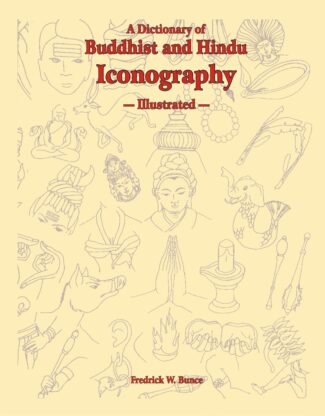
This Dictionary attempts to reveal the divine paradoxes of Buddhist-Hindu iconography by even interpreting the nuances of their iconic language. It explains, vividly, thousands of iconic representations (visual, conceptual symbols, images, objects, concepts, rites).
Man has, from times immemorial, exhibited a striking predilection for symbols. Which, through written words, drawings, sculptures or other visual/iconographic representations, seem to have shaped much of mankinds culture. From the simplest, yet eloquent, drawings on the walls of the prehistoric caves, through the sophistication of Egyptian imagery, the sculptural embroidered wealth of a Khajuraho, or the convoluted elegance of a Mannerist painting all interweave iconographic imagery so inextricably into their very core that, without its visual/didactic richness, these would be a mere shell, a hollow vanity! Veritably, our cultural scenograph will lose much of its aesthetic charm and meaning, once it is bereft of iconography. Over the centuries, Buddhisn and Hinduism (Brahmanical) have built up pantheon after pantheon, with a bewildering number of divinities, in varying forms and emanations and, significantly, with myriad iconographic attributes. Which, for both their definable precision and complex multi-interpretationality, not merely seem paradoxical, but may baffle even the specialists and the initiated as well. Here is just the Dictionary trying, for the first time, to help you see into the divine paradoxesof Buddhist-and-Hindu iconography and, simultaneously, interpret the very nuances of their iconic language. Painstakingly compiled by a distinguished scholar of Oriental/Buddhist Art, it is a Buddhist-and-Hindu Iconologia par excellence, spelling out vividly thousands of iconic representations, which these two of the worlds oldest, sustained faiths have left for all times to come. In its monumental effort to explain/interpret Buddhist-and-Hindu visual/conceptual symbols, images, objects, concepts and rites, the Dictionary extends the definition of iconography to embrace numerous peripheral/other terms, which either have immediate relevance to iconographic principles or are hard to dispense with in visualizing the true import of different icons. Dr. Bunces work has, at its base, his own first-hand observation of various temples in India, Nepal and several Southeast Asian countries; besides a number of authentic sources: both illustrated and verbal. Flawlessly illustrated: from cover to cover, it includes a compellingly readable introduction, an easy-to-understand Users Guide, extensive bibliographic references, and two well-planned lists to facilitate location of its each headword, each entry. Which all reinforce the Dictionarys indispensability to the specialists and the non-specialists who have often to grope for the essentials of Buddhist/Hindu iconographic complexities.
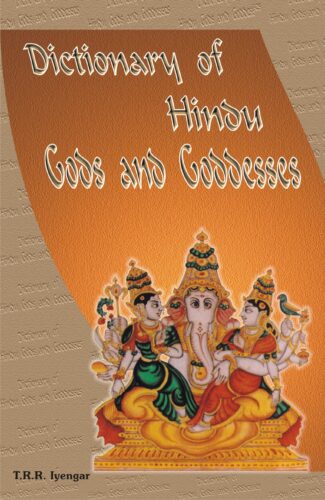
The book systematically studies various Hindu gods and goddesses based on Hindu sacred literature. It covers their earliest references and the evolution of their worship, their attributes and forms, and their signific-ance in the Hindu scheme of worship. It also includes references to many animate/inanimate sacred beings/things associated with the deities.
The Hindu pantheon of gods and goddesses has evolved over many millennia from a simple worship of elements and phenomena of nature to a complex system of myriad gods and goddesses of differing physical attributes, characteristic features and functions and each with different forms. The present Dictionary is an attempt to provide an in-depth yet comprehensive account of Hindu gods and goddesses referring to all the important religious sources. Based on Hindu sacred literature including the Vedas, epics and the Puranas, the book is a systematic study, in alphabetical order, of various Hindu gods and goddesses covering aspects such as the evolution of their worship and their earliest references in texts, stories of their birth and achievements, their attributes, their significance in the Hindu scheme of worship, their forms of representations, and their relationship with one another. It has references to not only personified beings but also other animate and inanimate sacred beings/things, seen in close association with the deities and worshipped by devotees, like Nandi, the bull, the snakes, the banyan and pipal trees, the saligramas and the banalingas. The adornments, vahanas, weapons and places associated with the deities are also elaborately discussed. The Dictionary will be an immensely useful reference work for scholars of ancient Indian mythology and religion as well as general readers willing to know more about Hindu gods and goddesses.

The book systematically studies various Hindu gods and goddesses based on Hindu sacred literature. It covers their earliest references and the evolution of their worship, their attributes and forms, and their signific-ance in the Hindu scheme of worship. It also includes references to many animate/inanimate sacred beings/things associated with the deities.
The Hindu pantheon of gods and goddesses has evolved over many millennia from a simple worship of elements and phenomena of nature to a complex system of myriad gods and goddesses of differing physical attributes, characteristic features and functions and each with different forms. The present Dictionary is an attempt to provide an in-depth yet comprehensive account of Hindu gods and goddesses referring to all the important religious sources. Based on Hindu sacred literature including the Vedas, epics and the Puranas, the book is a systematic study, in alphabetical order, of various Hindu gods and goddesses covering aspects such as the evolution of their worship and their earliest references in texts, stories of their birth and achievements, their attributes, their significance in the Hindu scheme of worship, their forms of representations, and their relationship with one another. It has references to not only personified beings but also other animate and inanimate sacred beings/things, seen in close association with the deities and worshipped by devotees, like Nandi, the bull, the snakes, the banyan and pipal trees, the saligramas and the banalingas. The adornments, vahanas, weapons and places associated with the deities are also elaborately discussed. The Dictionary will be an immensely useful reference work for scholars of ancient Indian mythology and religion as well as general readers willing to know more about Hindu gods and goddesses.
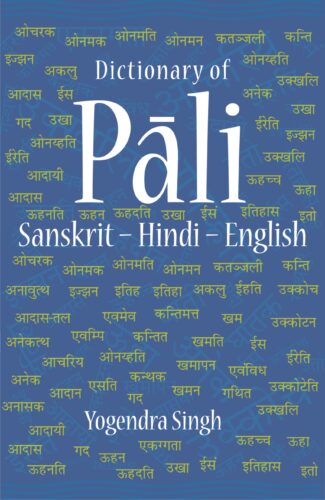
This dictionary provides meaning of Pali words in Sanskrit, Hindi and English. It will certainly prove useful to the learners of Pali language, students, scholars and researchers of Buddhist Studies, Pali Canons, and to those whose work is based on Pali.
As the teachings of the Buddha and the main Buddhist literature in original, as well as in translation, are contained mainly in Pali and Sanskrit languages, apart from Tibetan and Chinese as well, knowledge of Pali and Sanskrit is always essential to study the core of Buddhism — its basic teachings — and understand its basic concepts and perceptions. This voluminous edition has been offered in order to aid in the knowledge of the Pali and Sanskrit languages. Simple to comprehend and laying stress on clarity of meaning, the dictionary presents the Pali word at the beginning of each entry and gives its synonym in Sanskrit within bracket. It then proceeds to furnish the meaning of the word in both Hindi and English. The attempt is to make the dictionary useful to learners of the language and as a guide to those who are researching Buddhist works.
The book is meant to be a study companion to students and scholars of Buddhist Studies. It will be an indispensable aid to the readers and researchers of Pali Canons and works based on Pali and Sanskrit languages.

This newly-edited edition of D?ks??prak??a brought out jointly by DK Printworld and The Tantra Foundation, New Delhi is an authentic compilation based on some of the authoritative Tantras such as the ??rad?tilaka and the Tantras?ra of ?gamav?gi??a. The short and succinct work covers a wide range of ta?ntric topics such as rites associated with ta?ntric form of initiations, the qualities of guru and the disciple, activation of ta?ntric mantras by means of the esoteric rituals and worship of deities.
???????? ??? ?????????? ?? ???? ?? ?? ????????? ?? ?? ?????????? ??? ?????? ??????? ??? ?? ? ?? ??????? ??????? ????? ?? ?????? ???? ?? ?????? ??????? ?? ?????? ?? ???????? ?????? ?? ????????? ?? ???? ?? ????? ???? ?? ?????? ?? ????? ?????????? ?? ?? ????? ?? ?? ??? ? ????????? ??? ?????????-??????? ?? ???????? ?? ???? ?? ????? ???? ??? ??? ?? ?????? ?? ????? ?????? ??? ???? ???? ?? ?? ????? ???? ?? ? ???? ?????-???? ?????? ??????????? ??? ???? ?? ???? ??????? ?????? ?? ?????? ?? ???? ???????????? ???? ??? ? ??? ??????? ?? ??????? ?? ?? ??????? ????? ???????? ?? ??????? ?? ???? ?????? ?? ?????? ???????? ?? ??????? ?? ??????-?????, ?????????-?????, ?????????? ??? ?? ?????-??????? ????? ???? ??? ??????? ?? ?????? ????? ??????? ???? ??? ?? ??????? ?????? ?????? ?? ? ??? ??????-????????? ?? ????? ???? ??? ?????????? ???????? ??? ????????? ??? ????? ??? ???????????? ?? ??????????? ?? ?????? ?????? ???????????? ?? ?? ?? ?????????-???? ?? ????????? ?????? ???? ?? ??????? ?? ????????, ?? ????????? ?????? ????? ?????? ?? ? ???????????? ???? ?? ?????? ??? ?? ???????? (????????) ??? ???????? ?? ? ????? ?????? ??? ????-????? ?????, ???????????-?????, ??????-?????????, ?????? ?? ?????????? ?? ??????, ?????? ?? ?? ???? ?? ?????? ??? ????-??????? ?? ?????? ??? ???? ????????, ???????? ?? ?????????-??????, ??????? ????????? ?? ??????, ??????-????? ?? ???? ??? ?? ????? ??? ??????? ?????? ??? ?????? ?? ????, ????? ?????? ??? ???????? ?? ??????? ?? ????, ?????? ?????? ??? ???????? ???? ?? ????, ???? ?????? ??? ??????-??????, ????? ?????? ??? ????-??? ?? ?????? ??? ?????????? ???????? ?? ?????, ????? ?????? ??? ????? ???? ?? ?????? ?????? ?? ??????????? ?? ?????, ????? ?????? ??? ?????????????, ??????? ?? ?????????? ?? ???? ??? ??? ?????? ??? ?????? ??? ?? ???????????-???? ??? ?? ????? ??? ?? ?????? ?? ?? ?????? ???, ????? ?? ?????? ????????? ?? ?????????? ?? ??? ??? ?????? ?? ?
Leonard Bloomfield described Panini’s Ashtadhyayi (7th century bc) as ‘one of the greatest monuments of human intelligence.’ It is a complete, explicit and comprehensive grammar of both spoken and textual (compositional) Sanskrit. Most of the reputed and renowned Indian and foreign universities running courses on Indian knowledge systems, study it for its principles of analysis, organization and description. What is of great interest is the theoretical framework that informs this grammar, a framework that has remarkable power to describe human languages, particularly the Indian languages.
Panini is the watershed in the linguistic history of India. Before Panini, there was extensive work in phonetics, in morphology and lexicon (in the patha tradition) and in nirvacana (etymology). There is evidence also of the existence of several schools of grammar. In what is characteristic of the Indian intellectual traditions, Panini distilled the available grammatical knowledge and put it in 32000 syllables — as if, it has been said, an ocean has been accommodated in a cow’s hoof-mark. After Panini, a whole tradition developed and produced rich works by Patanjali, Candrakirti, Jainendra, Bhartrihari, Bhojraja, Hemacandracarya, Bhattoji Dikshita, Nagesha Bhatta and many others. It also inspired work in literature and philosophy and has left its mark on the entire intellectual tradition. In the modern period, there is a spread of Ashtadhyayi studies round the globe and it has proved to be of great interest for the study of knowledge representation in the departments of system sciences.
A comprehensive study of the different dimensions of this wonderful grammar enlarges and alters the conceptual horizons of young minds and of all those who care to be associated with the Indian grammatical systems. This book is a record of that adventure.
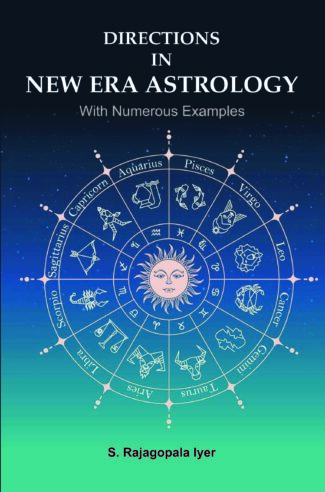
In this work the author explains an entirely new system of directions which, for ease of working and certainty of results, is unsurpassed by any of the extant methods. A new formula for longevity is included.
Directions in New Era Astrology is a veritable storehouse of all the methods employed in delineation prevalent in both systems. No single book furnishes such information on divers topics so very clearly and in such a masterly manner as this book. The author rightly and cogently points out the limitations in the several systems of direction in vogue either now or in the past. His keen powers of discretion and discrimination together with his experience of horoscopes for well over three decades have enabled him to develop and propound a method of directions which being a harmonious synthesis of all that is best in both the systems seems to fit in with the events and times of their occurrences in a better way than every other method. The book with horoscope diagrams neatly illustrated under various heads such as longevity, marriage, accidents etc. should be possessed by all students of astrology, the lay as well as the professional.
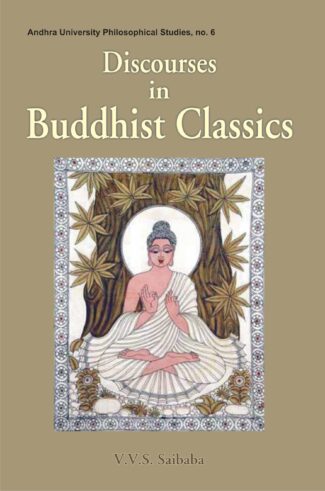
This work serves as a useful companion for the scholars and researchers who are seriously interested in the history of Buddhist literature; who wish to probe into Buddhist Textual Studies and who desire to have a lucid understanding of the philosophy of the two major Buddhist traditions of Theravada and Mahayana.
Discourses in Buddhist Classics is primarily designed with twofold objective viz., (a) to serve as the tool for post-graduate teaching of the Course in Philosophy of the Buddha; and (b) to sustain the interest of the enterprising student by providing comprehensive understanding of Theravada and Mahayana schools of Buddhism. Divided into six chapters, the first chapter gives an account of the missionary life and object of Buddha’s teachings from Pali and Sanskrit sources; the second surveys the evolution of Pali language and its significant contribution; the third and fourth provide a brief sketch of Pali Tripitakas, the salient features as well as the Philosophical doctrines of Theravada and Mahayana Buddhism by comparison and contrast. The last two chapters discuss the historiography of the two representative Buddhist Classics each from Thervada and Mahayana philosophical schools of Buddhism viz., Dhammapada, Sutta-Nipata, Vajracchedika Prajnaparamita and Saddharma Punóarika Sutra while throwing light on their central teachings. This work serves as a useful companion for the scholars and researchers who are seriously interested in the history of Buddhist literature; who wish to probe into Buddhist Textual Studies and who desire to have a lucid understanding of the philosophy of the two major Buddhist traditions of Theravada and Mahayana
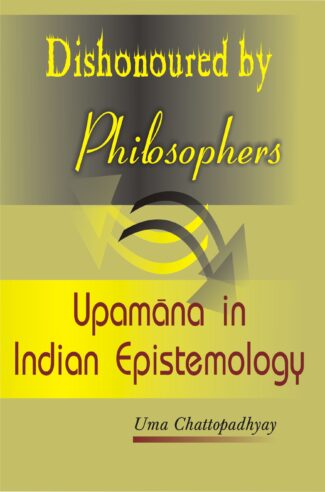
The volume is a study of the importance of upamana (knowledge by analogy) in Indian epistemology, with special focus on the Nyaya (and Mimamsa) positions on upamana and the usefulness of upamana as stressed by the Naiyàyikas. It highlights also the views of some schools against upamana as such.
The volume is a study of the importance of upamana (knowledge by analogy) in Indian epistemology. The two stalwart schools of Nyaya and Mimamsa admit the relevance of upamana but differ with regard to many things including the object of knowledge by upamana.
This book explores the way Naiyayikas and the Mimamsakas differ on some major points with reference to upamana in their very definition of upamana, for instance. The focus is on the Nyaya position on upamana and the usefulness of upamana as stressed by the Naiyayikas. The analytic study by the dialectical method explains the classical Nyaya view of upamana of Gautama and his followers and then the classical Mimamsa views. It considers the views of Naiyayikas Jayanta Bhatta and Udayanacarya to show how much the Naiyayikas were logical in accepting a particular view on upamana. It gives the views of some other schools including the Bauddha and Vaiseshika schools against upamana as such and against Nyaya and Mimamsa views of upamana in particular. Throughout, a number of philosophical scholars and their original texts spread over many centuries are examined.
The book will interest scholars and students of Indian philosophy.
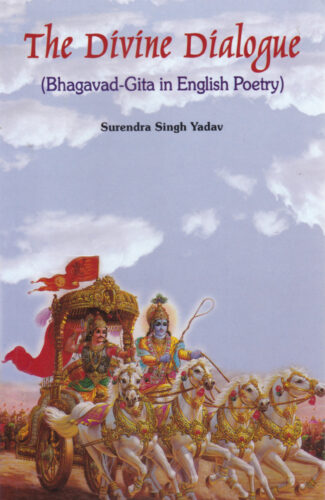
Dr. Yadav here captures the rich meaning of the Bhagavad Gita and presents it in a condensed form with a rare clarity. In a simple and fluent language, he brings out the glory of Lord Krishna and discusses the essence of the yoga of knowledge, karma yoga, the yoga of devotion and the yoga of meditation.
Recognising the significance of the Bhagavad Gita in the present times as a guide to understanding the life and attaining spiritual fulfilment, Dr. Surendra Singh Yadav conveys here its enduring message in the form of beautiful verses in English. In a simple and fluent language, the verses capture the rich meaning of the Gita and present it in a condensed form with a rare clarity. Much like his rare book in Hindi, titled, KrishnaArjuna Samvad, this work in English, brings out the glory of the Lord Krishna and gives out the essential substance of the yoga of knowledge, the karma yoga, the yoga of devotion and the yoga of meditation. The book will make essential reading for all as the Gita is concerned with the human quest in the battle field of life and provides the guidelines for a victory therein.
| There are no products |